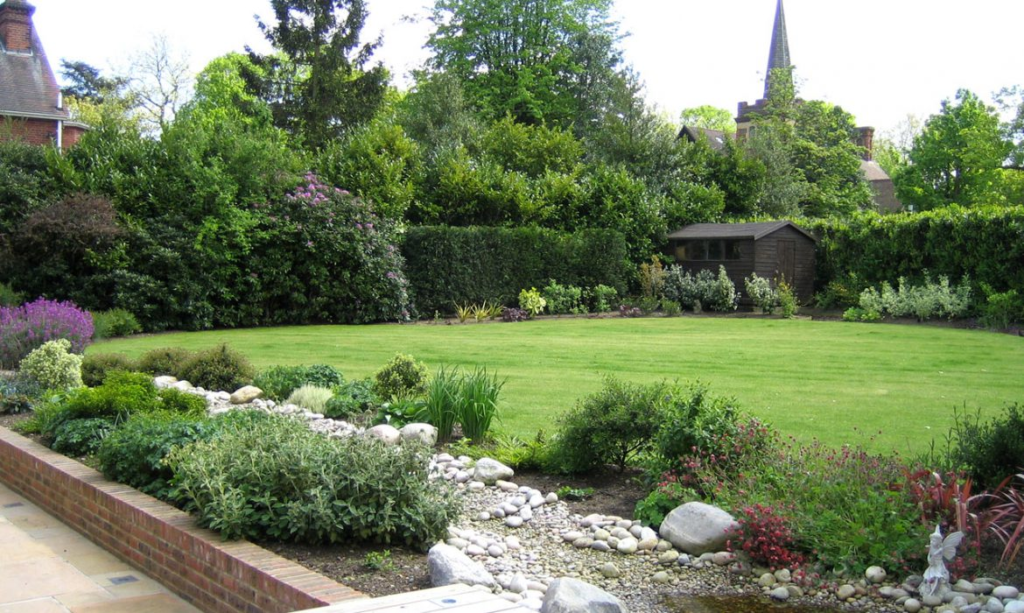Getting The Hilton Head Landscapes To Work
Getting The Hilton Head Landscapes To Work
Blog Article
Some Known Questions About Hilton Head Landscapes.
Table of ContentsHow Hilton Head Landscapes can Save You Time, Stress, and Money.About Hilton Head LandscapesThe 10-Minute Rule for Hilton Head LandscapesNot known Factual Statements About Hilton Head Landscapes 6 Easy Facts About Hilton Head Landscapes ShownHilton Head Landscapes - An OverviewThe smart Trick of Hilton Head Landscapes That Nobody is Discussing
Line produces all kinds and patterns and can be used in a variety of ways in the landscape. Line in the landscape is created by the side between two materials, the outline or silhouette of a form, or a lengthy straight feature. Lines are an effective device for the developer since they can be used to create a limitless selection of shapes and types, and they regulate movement of the eye and the body.

Lines in the landscape. The properties of lines establish how individuals react to the landscape, both emotionally and literally.
Hilton Head Landscapes - Questions
Straight lines are most often discovered in hardscape edges and material. Bent lines produce an informal, natural, loosened up personality that is associated more with nature and asymmetrical equilibrium. Curved lines relocate the eye at a slower pace and add enigma to the room by producing surprise sights. Vertical lines relocate the eye up, making an area feel bigger.
Vertical lines in the landscape consist of high, slim plant product, such as trees, or tall frameworks, such as an arbor or a bird home on a post. Straight lines move the eye along the ground airplane and can make a space really feel larger. Low lines are extra controlled and produce a sensation of rest or repose.
The 3-Minute Rule for Hilton Head Landscapes
Lines are likewise created by the vertical kinds of developed features and plant material. There are 3 primary line kinds that develop type in the landscape: bedlines, hardscape lines, and plant lines.
Bedlines connect plant product to your home and hardscape due to the fact that the eye adheres to the line, moving the gaze through the landscape. Hardscape lines are developed by the edge of the hardscape, which defines the constructed structure. Line can additionally be produced by long and narrow materials, such as a fence or wall.
The 8-Second Trick For Hilton Head Landscapes
Form is found in both hardscape and plants, and it is commonly the leading aesthetic component that spatially arranges the landscape and usually establishes the design of the garden. The type of frameworks, plant beds, and yard ornaments also determines the overall form theme of the yard. Official, geometric types include circles, squares, and polygons.
Plants develop type in the garden through their outlines or silhouettes, however type can additionally be specified by a space or adverse area in between plants - bluffton landscaping (https://canvas.instructure.com/eportfolios/3001127/Home/Transform_Your_Yard_with_Hilton_Head_Landscapers). Circles can be complete circles, or they can be split right into half circles or circle sections and integrated with lines to create arcs and tangents
Getting My Hilton Head Landscapes To Work
Circles are a solid design kind since the eye is always attracted to the center, which can be used to emphasize a focal point or connect various other types. Round forms in hardscape and lawn panels.
The square type can additionally be fractional and secondhand repetitively to create a grid pattern. Unlike circles, squares are stronger on the brink, which can be lined up or overlapped to create unique patterns and more complex types. Polygons are many-sided forms with straight edges. Triangulars, for example, are three-sided polygons.
Meandering lines typically mimic the all-natural training course of rivers or streams and can be referred to as smooth lines with deeply rounded undulations. Twisting lines (Figure 3) function well for pathways, plant bedlines, and dry stream beds. Meandering lines can add rate of interest and enigma to More about the author a yard by leading audiences around corners to find new views and spaces.
The Greatest Guide To Hilton Head Landscapes

Common plant types are well established and standardized, as type is the most constant and recognizable quality of plants. Type can additionally be produced via the massing of plants, where the overall mass produces a various kind than a specific plant.
A very contrasting type should be used with careone or 2 work well as a focal point, however way too many create turmoil. All-natural plant kinds, rather than over-trimmed forms, must establish the bulk of the composition. The significance of general form is much more or less dependent on the seeing perspectivethe form of a tree can show up fairly various to an individual standing under the cover versus watching the tree from a range in an open field.
More About Hilton Head Landscapes
Plant kinds additionally create and define deep space or open areas in between the plants, creating either convex or concave forms in deep spaces. High-arching tree branches commonly develop a concave open room under the branches, and a rounded cover with reduced branches fills the room to develop a convex type outdoors area under the tree.

Report this page